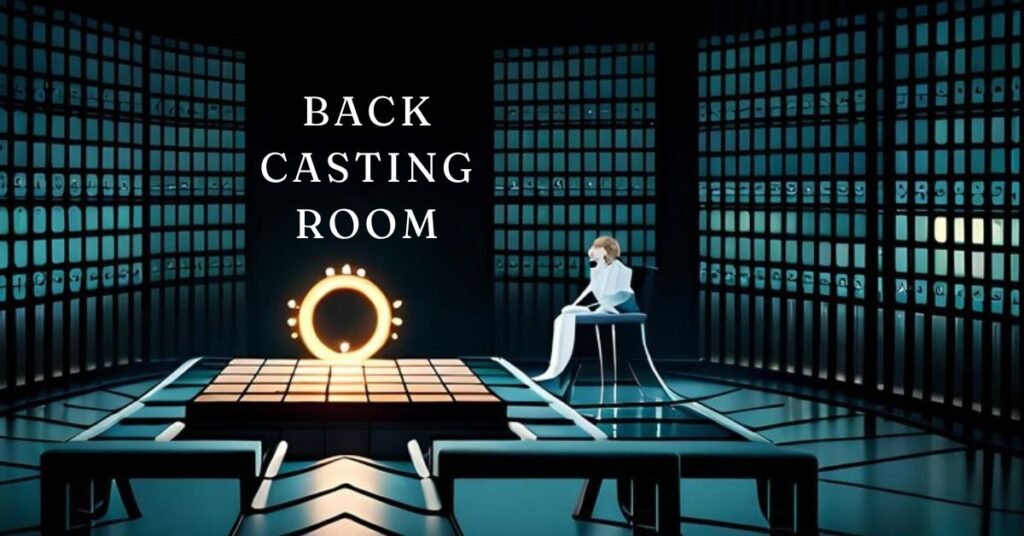Introduction
Imagine stepping into a room where the future unfolds before your eyes—not as a mystery, but as a tangible destination. A back casting room is precisely that space. It’s where big dreams meet actionable plans and teams collaborate to chart a clear path from vision to reality.
Whether you’re strategizing for corporate goals, community projects, or personal milestones, a back casting room offers the perfect environment to harness creativity, align perspectives, and work backward from success. Let’s explore how this transformative concept works and why it’s redefining strategic planning for teams worldwide.
What Exactly Is a Back Casting Room?
A back casting room is a purpose-built space designed to facilitate the backcasting method—a forward-thinking planning approach that starts with a clear vision of the future and works backward to identify the steps needed to achieve it.
The Ingredients of an Effective Back Casting Room
Every backcasting room is designed to spark creativity and collaboration. Think of it as a strategic playground with:
- Whiteboards and sticky notes: To capture ideas in the moment.
- Digital collaboration tools: For remote or hybrid team members.
- Comfortable seating and inspiring decor: To keep participants energized and focused.
Unlike a traditional meeting space, this room is a hotbed of energy and innovation, for deep thinking and dynamic discussion.
Why Traditional Planning Fails
Let’s be real: traditional planning is a slog. Starting from where we are and trying to project into the future only leads to incremental thinking. Why?
- Short-term thinking: Teams get stuck in current problems instead of thinking big.
- Reactive plans: Many plans address symptoms not root causes.
- No alignment: Without a shared vision team members go in different directions.
A backcasting room turns this on its head. By envisioning the outcome first teams get clarity and motivation to go big and bold.
The Backcasting Method: A How-To
At its simplest backcasting is working backward from a desired future. Here’s how it works in a backcasting room:
1. Envision the Ideal Future
Start by painting a picture of success. What does your team want to achieve? Examples might be:
- Be carbon neutral by 2040.
- Launch a new product in the next 5 years.
- Turn a community into a hub for sustainable living.
This sets the stage for the whole process. It’s about thinking big and being specific.
2. Current Conditions
- What strengths and resources can the team leverage.
- What obstacles or gaps need to be filled.
- What data and insights to inform decision making.
Think of it like a road trip: you need to know where you’re going and where you’re starting.
3. Work Backward to Identify Milestones
Here’s where the backcasting magic happens. Teams map out the key milestones to get from today to the ideal future. Each milestone is:
- Actionable.
- Aligned to the vision.
- Measurable.
4. Tactical Plans
Now break the milestones into next steps. That creates momentum and everyone knows what to do when they leave the backcasting room.
Why Every Organization Needs a Back Casting Room
1. Encourages Big-Picture Thinking
A back casting room encourages participants to think beyond the status quo. Instead of asking, “What can we do better?” the focus shifts to, “What is possible?”
2. Fosters Collaboration
These rooms are designed to break down silos and bring teams together. The open exchange of ideas often leads to innovative breakthroughs.
3. Aligns Team Efforts
By defining a shared vision, everyone knows what they’re working toward—and why it matters. This alignment reduces friction and improves focus.
4. Increases Accountability
With clear milestones and actionable steps, it’s easier to track progress and hold team members accountable.
Real-World Examples of Back Casting in Action
1. A Sustainability Roadmap for a Tech Company
A global tech giant used a back casting room to plan its journey toward becoming carbon neutral. The session began with a bold vision: zero emissions by 2030. Working backward, the team identified key milestones, including:
- Transitioning to renewable energy by 2025.
- Investing in carbon offset programs.
- Redesigning products for energy efficiency.
The result? A clear, actionable plan that aligned stakeholders across the company.
2. Revitalizing a Local Community
In a small city, local leaders gathered in a back casting room to envision a more vibrant, sustainable future. Their vision included walkable neighborhoods, renewable energy, and thriving local businesses.
Through collaborative discussions, they developed a step-by-step plan to secure grants, attract investors, and engage residents in the transformation process.
Creating the Perfect Back Casting Room
Setting up a back casting room doesn’t require a huge budget—just thoughtful planning. Here are some tips:
1. Choose the Right Space
Select a room that’s well-lit, spacious, and free from distractions.
2. Equip the Room with Tools
Stock up on essentials like markers, sticky notes, digital screens, and collaboration software.
3. Design for Comfort and Creativity
Incorporate ergonomic furniture, inspiring visuals, and even snacks to keep participants energized.
The Future of Back Casting Rooms
As businesses and organizations face increasingly complex challenges, the demand for innovative planning methods like backcasting will grow. Future back casting rooms may feature:
- Virtual reality tools to visualize future scenarios.
- AI-powered insights to support decision-making.
- Hybrid collaboration platforms for global teams.
These advancements will make backcasting even more accessible and impactful.
Conclusion: Where Vision Meets Action
A back casting room isn’t just a physical space—it’s a mindset shift. It’s where lofty dreams transform into clear plans, and where teams align to tackle challenges with purpose and precision.
By encouraging big-picture thinking, fostering collaboration, and providing a structured framework, back casting rooms are changing the way we plan for the future. Whether you’re aiming to reshape an industry, transform a community, or achieve a personal goal, the backcasting method offers a roadmap to success.
So, gather your team, step into the back casting room, and start envisioning the future you want to create. The possibilities are endless—just imagine the steps to get there.
FAQs
What is a back casting room?
A back casting room is a space designed for teams to use the backcasting method, envisioning a desired future and mapping out steps to achieve it.
How does backcasting differ from traditional planning?
While traditional planning focuses on incremental improvements from the present, backcasting starts with a clear future vision and works backward to identify actions.
What tools are essential for a back casting room?
Whiteboards, sticky notes, digital collaboration tools, and comfortable seating are key.
Who can benefit from backcasting?
Businesses, governments, nonprofits, and even personal project teams can benefit from this visionary planning approach.
How do you create a back casting room?
Choose a well-equipped, distraction-free space that fosters collaboration and creativity.






